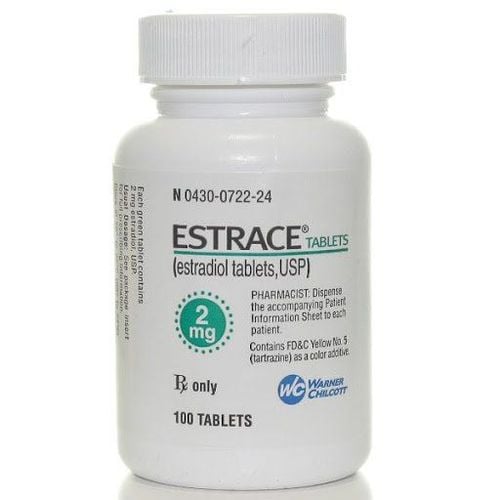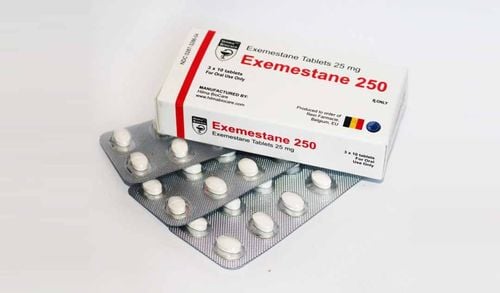This is an automatically translated article.
Anastrol is a drug that affects the immune system, often indicated to support the treatment of breast cancer in postmenopausal women. So what are the uses of the drug and what are the precautions when using it?1. What is Anastrol?
Anastrol has the main ingredient Anastrozole - an aromatase inhibitor, with high selectivity and strong effects. In postmenopausal women, the hormone androstenedione is converted to estrogen by the aromatase enzyme complex in peripheral tissues. Inhibiting estrogen production will reduce the proliferation of breast cancer cells.The effects and metabolism of the drug are independent of the age of postmenopausal women. Anastrol is rapidly absorbed from the gastrointestinal tract and reaches maximum plasma concentrations within 2 hours of oral administration. The drug is extensively metabolised in the liver and slowly eliminated in the urine.
2. Indications of the drug Anastrol
Anastrol drug is indicated for treatment in the following cases
Support treatment for women with estrogen receptor positive early postmenopausal breast cancer. Advanced breast cancer in postmenopausal women.
3. Contraindications of Anastrol
Anastrol medicine should not be used in the following cases
Allergy to anastrozole or to any of the excipients of the drug. Pre-menopausal women. Pregnant and lactating women should not take Anastrol. Patients with severe renal impairment glomerular filtration rate less than 20ml/min. The patient is on estrogen therapy, taking the drug Tamoxifen. Note when taking Anastrol:
It is necessary to accurately determine the menopausal status by biochemical tests before taking Anastrol. Patients with impaired liver and kidney should not use the drug because safety has not been proven. Osteoporosis should be checked before taking the drug because Anastrol increases the risk of osteoporosis in postmenopausal women.
4. Anastrol drug interactions
Co-administration of Anastrol with Antipyrine, Cimetidi n may increase hepatotoxicity. Concomitant use with estrogen therapies may reduce the bioavailability of Anastrol. Tamoxifen reduces the effects of Anastrol when taken together.
5. Dosage and usage
How to use :
Anastrol is made in the form of tablets. Take the medicine with a sufficient amount of water away from meals. Dosage:
Postmenopausal women with breast cancer: take 1 tablet/day. Patients with mild hepatic impairment, renal impairment with glomerular filtration rate greater than 20 ml/min do not require dose adjustment of Anastrol.
6. Anastrol side effects
When using Anastrol, you may experience some unwanted effects as follows
Common side effects:
Mild or moderate hot flashes. Weakness, fatigue, headache. Musculoskeletal pain, stiffness. Vaginal dryness, vaginal bleeding. Hair loss, skin rash, itching, allergies. Nausea, vomiting, diarrhea, loss of appetite. Increases alkaline phosphatase, aspartate aminotransferase, alanine aminotransferase. Rare side effects:
Steven-Johnson syndrome, erythema multiforme. Allergic reactions, angioedema, urticaria. Thus, Anastrol is an adjuvant drug in the treatment of breast cancer in postmenopausal women who are estrogen receptor positive. The drug is proven to be effective in treatment, but should not be abused and must be used under the supervision of a specialist.
Please dial HOTLINE for more information or register for an appointment HERE. Download MyVinmec app to make appointments faster and to manage your bookings easily.













